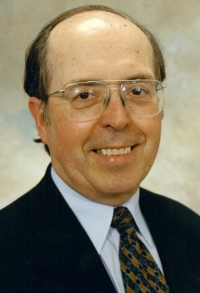Step 3. Transitioning from Group to Team

To build a perfect team, you must lead the transition from a group of individuals working on their own agendas to a team of members working together to achieve team and organizational goals.
The process for moving the group from dependence (on the leader) through counterdependence (when the leader helps the group to learn how to work together) to interdependence (when the leader and the team share leadership).
Most groups fail to overcome the challenges of the intermediate step (counterdependence) and thus remain stuck in the dependence stage and perform at a much lower level than their inherent potential.
You will learn the secrets to leading a group through this crucial transition stage to become a high performance team in Chapter 3 of the book.
Step 2. Creating Psychological Safety

Creating psychological safety is necessary to build a perfect team.
If people don't feel safe in a meeting, they will not perform at their best.
If you have ever been in a situation in a group where you felt you would probably be criticized for expressing your opinion, even if someone asked you to share it, then you know what the opposite of psychological safety is and how much its absence prevents people from participating in the group process.
Ask yourself what makes you feel psychologically safe in a group setting.
In the second step of the Perfect Team Model, you will create two ground rules/norms for interaction that create a team environment that foster psychological safety and thereby unlock the door to extraordinary team performance.
While this is not the only thing you have to do to ensure such extraordinary performance, it is an essential precursor to the other five steps of the Perfect Team Model, which collectively enable you as the leader to build the perfect team.
Step 1. Balancing the Team

This is the latest in a series of blog posts on building a high performance team based on the principles described in my new book, Build the Perfect Team.
If you want to build the perfect team, make sure the team has good balance. This means having people with relevant hard and soft skills, who think differently, are diverse and culturally aware, and understand the needs and capabilities of the people affected by the team’s work.
Hard and Soft Skills
To be successful, teams must include individuals with the hard and soft skills necessary to identify and develop effective solutions to the problems or opportunities they face. People with hard skills (such as technical and product knowledge), are easier to identify and add to the team than those with soft skills (such as self-awareness, communication, collaboration, and leadership). Potential team members as a rule have well-developed hard skills, typically gained through formal education or job-specific training. But most have inadequate soft skills because academic curricula do not stress the need for them and many leaders lack the time, knowledge, or ability to instill them. As team leader, you should include as members, whenever possible, people who bring both sets of skills to the team. When this is not possible, you should develop the soft (people) skills of those who lack them as part of the team development process, which you will learn how to do later, or through formal training.
The Perfect Team Model

This is the latest in a series of blog posts on building a high performance team based on the principles described in my new book, Build the Perfect Team.
The members of a perfect team are engaged, motivated, vision-driven, collaborative, and extremely productive.
There are 7 steps in the process for building a perfect team:
1. Balancing the Team
2. Creating Psychological Safety
3. Transitioning from Group to Team
4. Adopting the Team Leadership Model
5. Using Collaborative Problem-Solving Processes
6. Applying Participative Implementation Processes
7. Facilitating Team and Organizational Learning
Applying the 7 steps in the Perfect Team Model will enable you to build teams that work efficiently and effectively to solve the problems, and capitalize on the singular opportunities, that present themselves in the electronic age. We will examine each of these steps in future blog posts.
Tips on Building a Perfect Team

Effective teams are critical to success in today's environment of rapid, technology-driven change. Hence, in this era of very high project failure rates, it is not surprising that organizations search for ways to improve the performance of their teams. Google's intensive study of the characteristics of their best teams led them to an unexpected discovery. The best teams create an environment of psychological safety by adopting two team norms that lead to important shared behaviors. Group development experts agree that psychological safety is essential to a high-performing team. However, as you will discover, building the perfect team involves more than setting team norms.
A Presidential View

I took a very pleasant ridge walk in the early fall of my first hiking season on Pleasant Mountain in Bridgton, Maine. In August of the second season, I returned to climb the Ledges Trail, the shortest route to the summit of Pleasant Mountain (elevation = 2,006 feet), an elevation gain of some 1,500 feet up a very pleasant, and occasionally steep trail to a set of ledges at the 1.1 mile mark and the main summit after a 1.8 mile hike.
A Hiking Guru

Hiking the AT

A Walk in the Park

Whether you want to take a leisurely walk along the pristine shores of an iconic lake in search of moose, explore a variety of challenging trails with breathtaking views, or go for broke and climb to the summit of mighty Mount Katahdin (at 5268 feet in elevation, the highest peak in Maine), Baxter State Park is the number one place to hike in Maine. Created as a result of the generosity of Percival P. Baxter, a former governor of Maine and graduate of my alma mater, Bowdoin College, who donated the land for this 200,000 acre wilderness in north-central Maine, Baxter State Park is just incredible. A simple plaque on a boulder at Katahdin Stream Falls, gateway to Mount Katahdin via the Hunt trail (and the last leg of the famed Appalachian Trail for those thru-hikers traveling the entire 2,180 miles of the trail from south to north in one trek), captures the essence of the man who made it possible for all lovers of the wild to enjoy this majestic place forever:
Man is born to die. His works are short-lived. Buildings crumble, monuments decay, and wealth vanishes, but Katahdin in all its glory forever shall remain the mountain of the people of Maine.
Scholarly Writing: Style

To write at the doctoral level, you must meet high standards of communication. Both the content of your writing (i.e., your ideas per se) and the formatting of your document (i.e., how you present your ideas) are equally important in doctoral writing. The areas that you must pay special attention to when you write are:
Content
Organization
Grammar
Style
In this article, we examine issues related to the style of your doctoral papers
Scholarly Writing: Grammar

To write at the doctoral level, you must meet high standards of communication. Both the content of your writing (i.e., your ideas per se) and the formatting of your document (i.e., how you present your ideas) are equally important in doctoral writing. The areas that you must pay special attention to when you write are:
Content
Organization
Grammar
Style
In this article, we examine issues related to the grammatical correctness of your doctoral papers.
Scholarly Writing: Organization

To write at the doctoral level, you must meet high standards of communication. Both the content of your writing (i.e., your ideas per se) and the formatting of your document (i.e., how you present your ideas) are equally important in doctoral writing. The areas that you must pay special attention to when you write are:
Content
Organization
Grammar
Style
In this article, we examine issues related to the organization of your doctoral papers.
Scholarly Writing: Content

To write at the doctoral level, you must meet high standards of communication. Both the content of your writing (i.e., your ideas per se) and the formatting of your document (i.e., how you present your ideas) are equally important in doctoral writing. The areas that you must pay special attention to when you write are:
Content
Organization
Grammar
Style
In this article, we examine issues related to the content of your doctoral papers.
The Secret to Accelerating Your Doctoral Journey

This article is about how to optimize your doctoral journey so that you can produce your best work and complete your program of study in the shortest possible time.
Dissertation Research: Finding a Dissertation Committee

Earning a doctorate is not just about writing a quality dissertation. That is necessary, but not sufficient. Besides selecting a dissertation committee whose members have the expertise to assist you in crafting your dissertation, you must choose a chair with the knowledge and competence to guide you through the dissertation review process.
Because choosing the members of your dissertation committee is a crucial decision that can make the difference between earning a doctorate or being ABD, you need to do so with care. But how do you decide who should be on your committee and why they should be on it?
Dissertation Research: Finding a Dissertation Topic

One of the biggest challenge that students face in their doctoral programs is finding a viable (i.e., doable and researchable) dissertation topic.
The most common initial topic that I have encountered in many years of working on dissertation committees (as chair, member, content expert, or methodologist) is one that a student lives with every day at work.
Dissertation Research: A Systemic View

One of the characteristics of systems that we are all familiar with is the fact that the parts of a system are interconnected. As a result, a change in one part of the system affects the other parts of the system to varying degrees.
There are 10 interrelated steps in the dissertation process:
Critical Thinking at the Doctoral Level

The 4Ps of Doctoral Study: Participation

One of the secrets of accelerating your progress toward your ultimate goal of earning a doctoral degree is to practice the 4 Ps.
I am not referring to Product, Price, Promotion, and Place, the 4 Ps of Marketing.
Rather, I am referring to an equally important list of Ps related to doctoral study—Planning, Persistence, Patience, and Participation.
In this article, I will discuss the fourth P—Participation.
The 4Ps of Doctoral Study: Patience

One of the secrets of accelerating your progress toward your ultimate goal of earning a doctoral degree is to practice the 4 Ps.
I am not referring to Product, Price, Promotion, and Place, the 4 Ps of Marketing.
Rather, I am referring to an equally important list of Ps related to doctoral study—Planning, Persistence, Patience, and Participation.
In this article, I will discuss the third P—Patience.
